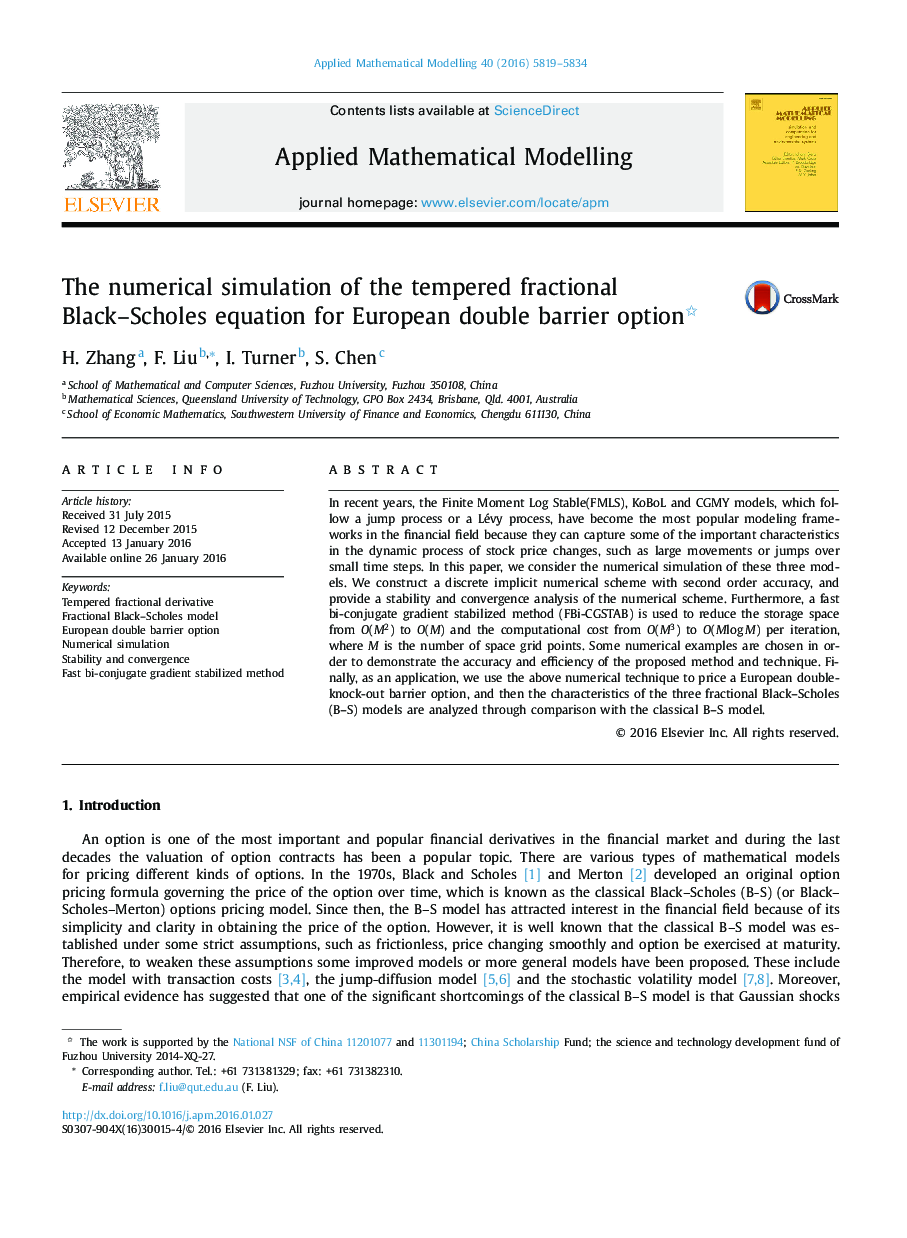| کد مقاله | کد نشریه | سال انتشار | مقاله انگلیسی | نسخه تمام متن |
|---|---|---|---|---|
| 1702697 | 1519399 | 2016 | 16 صفحه PDF | دانلود رایگان |
• Tempered fractional Black–Scholes equation.
• European double barrier option.
• Numerical simulation.
• Stability and convergence.
• Fast bi-conjugate gradient stabilized method.
In recent years, the Finite Moment Log Stable(FMLS), KoBoL and CGMY models, which follow a jump process or a Lévy process, have become the most popular modeling frameworks in the financial field because they can capture some of the important characteristics in the dynamic process of stock price changes, such as large movements or jumps over small time steps. In this paper, we consider the numerical simulation of these three models. We construct a discrete implicit numerical scheme with second order accuracy, and provide a stability and convergence analysis of the numerical scheme. Furthermore, a fast bi-conjugate gradient stabilized method (FBi-CGSTAB) is used to reduce the storage space from O(M2) to O(M) and the computational cost from O(M3) to O(Mlog M) per iteration, where M is the number of space grid points. Some numerical examples are chosen in order to demonstrate the accuracy and efficiency of the proposed method and technique. Finally, as an application, we use the above numerical technique to price a European double-knock-out barrier option, and then the characteristics of the three fractional Black–Scholes (B–S) models are analyzed through comparison with the classical B–S model.
Journal: Applied Mathematical Modelling - Volume 40, Issues 11–12, June 2016, Pages 5819–5834
